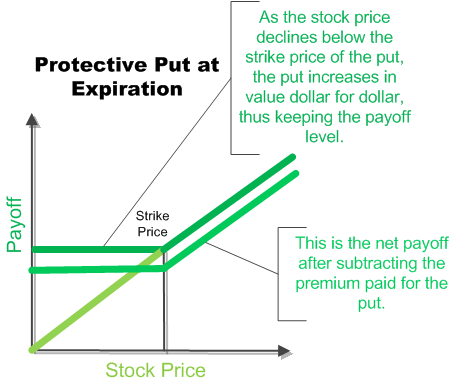Contents
Financial Statement Analysis is the diagnostic and investigative study of Financial Statements in order to take logical business decisions. Financial Statement Analysis takes the raw financial information from the financial statements and turns it into usable information the can be used to make decisions. The three types of analysis are horizontal analysis, vertical analysis, and ratio analysis. Each one of these tools gives decision makers a little more insight into how well the company is performing. The key difference between these two is that comparative financial statements display years’ financial information in percentages and absolute values .
- Price to Book Ratio tells us the relative value the market places on the company to the accounting valuation.
- While there’s no set rule as to what’s a good P/E, a low P/E is generally considered good because it may mean that the stock price has not risen to reflect its earning power.
- The Debt to Equity Ratio is a measure of a company’s financial leverage.
- This percentage change in items is mentioned in Column V of the comparative income statement.
- Ratio #1 shows how quickly the inventory is being turned over to generate sales …
It helps the analyst in comprehending these relationships and how each one plays its vital role in understanding a business’s growth, performance, scalability and other zones of it. Analysts analyses this common size as an income statement whereby dividing each line item by the top line . A https://1investing.in/ financial user can use it to contrast the financial performances of various entities at one glance. The reason is that each item is in the percentage form of total assets. Companies that use different accounting practices when they prepare reports on their financials at different dates.
Accounts Receivable Turnover is used to quantify a firm’s effectiveness in extending credit as well as collecting debts. The receivables turnover ratio is an activity ratio, measuring how efficiently a firm uses its assets. Use the Earnings per Share Calculator above to calculate the earnings per share from your financial statements.
A reserve specifically represented by earmarked investments shall be termed as a “fund”. The company does not have an unconditional right to defer settlement of the liability for at least twelve months after the reporting date. Terms of a liability that could, at the option of the counter party, result in its settlement by the issue of equity instruments do not affect its classification. It is cash or cash equivalent unless it is restricted from being exchanged or used to settle a liability for at least twelve months after the reporting date.
AS 5 Net Profit or Loss for the Period, Prior Period Items and Changes in Accounting Policies
Net worth divided by number of equity shares outstanding will give us the book value per share. The market value is equal to the price per share times the number of shares outstanding . We can estimate the intrinsic value of stock by using discounted cash flow models.
A) External analysis depends entirely on issued financial statements. A) common-size balance sheet shows relative value of the various items. Comparison of financial statements highlights the trend of the _________ of the business. Use the Sustainable Growth Rate Calculator to calculate the sustainable growth rate from your financial statements. Sustainable Growth Rate is the maximum growth rate of a company if none of its ratios change and it does not raise new capital through selling shares.
Some analysts prefer to use this ratio, which also shows the company’s reliance on external sources for financing its assets. For a lender, more important than the degree of leverage is the firm’s ability to service the debt and this is captured in the following two ratios. B) Trend percentages and trend ratios are used in static analysis. If cost of goods sold Rs 1,80,000 and Gross profit rate is 25% then find …… Profit Margin is used to determine the profitability of each dollar of sales that company makes.

This is quite important to note that the common size calculation is the same as calculating the margins for a company. The net profit margin is the net income that is divided by the sales revenue, and this is typically the common-size analysis. This is the same for calculating the gross margin , and the operating margin (that is the gross profit minus the selling & general administrative expenses, divided by the sales revenue). Is a type of balance sheet that shows both the relative percentage and numeric value for total assets, equity accounts and total liabilities. Share application money pending allotment shall be classified into equity or liability in accordance with relevant Indian Accounting Standards.
In vertical analysis of financial statements, an item is used as a base value and all other accounts in the financial statement are compared to this base value. Working capital compares current assets to current liabilities, and serves as the liquid reserve available to satisfy contingencies and uncertainties. A high working capital balance is mandated if the entity is unable to borrow on short notice. The ratio indicates the short-term solvency of a business and in determining if a firm can pay its current liabilities when due. Given the large quantity of variables included in financial statements, a very long list of meaningful ratios can be derived. A standard list of ratios or standard computation of them does not exist.
Comparative Income Statement
The company shall explain the items included in numerator and denominator for computing the above ratios. Further explanation shall be provided for any change in the ratio by more than 25% as compared to the preceding year. This is an all-inclusive heading, which incorporates current assets that do not fit into any other asset categories. Allowance for bad and doubtful loans and advances shall be disclosed under the relevant heads separately.
Preparing Comparative Financial Statements is the most commonly used technique for analyzing financial statements. This technique determines the profitability and financial position of a business by comparing financial statements for two or more time periods. Typically, the income statements and balance sheets are prepared in a comparative form to undertake such an analysis. The common size income statement is another type of income statement in which basically each line item is expressed as a percentage of the value of revenue or the sales.
Financial analysts must modify the information to ensure they follow the same procedures to create financial statements. Common size financial statements show that the line items are proportional to an overall base figure instead of absolute figures. The effect of such change in estimates is to be taken into account while preparing financial statements. If the change in estimate affects ordinary activities, it is disclosed under ordinary activities other under extraordinary activities. As the results season gets underway and balance sheets of companies begin to arrive, it is time for investors to understand the ratios that figure in them.

Period and amount of default as on the balance sheet date in repayment of loans and interest, shall be specified separately in each case. Period and amount of continuing default as on the balance sheet date in repayment of loans and interest, shall be specified separately in each case. Aggregate number and class of shares allotted as fully paid-up pursuant to contract without payment being received in cash. A company shall disclose the following in the notes to accounts. A receivable shall be classified as a “trade receivable” if it is in respect of the amount due on account of goods sold or services rendered in the normal course of business. One way to calculate NAV is to divide the net worth of the company by the total number of outstanding shares.
INVEST IN CURATED STOCK & ETF PORTFOLIOS
In addition to the disclosure requirements in the Indian Accounting Standards, the aforesaid disclosures shall also be made in respect of ‘other comprehensive income’. Financial statement analysis involves analyzing the firm’s financial statements to extract information that can facilitate decision-making. Given the usefulness of the comparative balance sheet and other financial statements, most business today have automated the process of preparing a comparative balance sheet using accounting software. Using accounting software or ERP system makes it possible for you to generate comparative statements on-time for confident decision making.
Financial Statement Analysis can also be defined as the process of identifying financial strengths and weaknesses of the firm by properly establishing relationship between the items of the balance sheet and the profit and loss account. Financial statements are the written records that convey that the business activities and the financial performance of a company is on or off track. These financial statements are audited by governmental agencies, by accountants, and by law firms.
While preparing the financial statements, there are certain items which actually correspond to prior accounting periods. The income or losses due to these items are a result of error or omission in the financial statements of the prior period. By nature, these items are not frequent and can be easily identified. The current period’s financial statements should clearly show the effect of such prior period items. Of the three main sources of cash flow, analysts look to that from operations as the most important measure of performance. If operations alone don’t generate positive cash flow, that may be cause for concern.
Titan Company Ltd.
Except in the case of the first Financial Statements laid before the Company the corresponding amounts for the immediately preceding reporting period for all items shown in the Financial Statements including notes shall also be given. Earnings per share are widely reported although it is now less closely followed . SEC requires that the company report both basic and diluted EPS.
What Is Vertical Analysis?
In addition, a decrease in cash flow due to a sharp increase in inventory or receivables can signal that a company is having trouble selling products or collecting money from customers. However, analysts look at the relative amount of these changes if accounts receivable have gone up by the same percentage as sales revenues, the increase may not be unusual. A comparative income statement showcases the operational results of the business for multiple accounting periods. It helps the business owner to compare the results of business operations over different periods of time.
If yes, then the company is shipping goods faster than customers are paying for them. In the current slowdown, customers look to change sales terms to use the supplier’s money as much as possible by acknowledging the sale as late as possible. Financial analysis is performed by both internal management and external groups. Firms would perform such an analysis in order to evaluate their overall current performance, identify problem/opportunity areas, develop budgets and implement strategies for the future. External groups also perform financial analysis in deciding whether to invest in a particular firm, whether to extend credit etc. There are several rating agencies (such as Moody’s, Standard & Poors) that routinely perform financial analysis of firms in order to arrive at a composite rating.
Clear can also help you in getting your business registered for Goods & Services Tax Law. A high amount of cash per share, if accumulated over the years, again indicates a strong company. A high amount of cash per share, if accumulated over the years, indicates a strong company. Where the Company has revalued its Intangible assets, the company shall disclose as to whether the revaluation is based on valuation by a Registered Valuer as defined under rule 2 of Companies Rules, 2017.
Comparative balance sheetIt is a statement showing assets and liabilities of the business for two or more accounting periods. It also shows the percentage change in the monetary value of the assets and liabilities. The difference between an income statement and a statement of cash flows is roughly analogous to the difference between a credit card statement and a checkbook ledger.